Our blog is mostly dedicated to expert articles that introduce our readers to the latest models of sailboats and motor yachts, as well as the most innovative marine equipment and accessories. But the life of the amateur sailing community is not limited just to the technical side.
Historically, many sea lovers were united by the interests and traditions of numerous yacht clubs in different parts of the world. But how did the club movement in the maritime community begin? Which yacht clubs were the first, what traditions did they introduce at the dawn of their appearance, and which of them have reached modern yachtsmen? We will try to answer these questions right now.
Of course, the first clubs in existence also happen to be the most prestigious yacht clubs in the world right now. We would like to warn you right away that the top 5 most prestigious yacht clubs in the world are an elite segment of sailing, with entry is available only with generational wealth kind of net worth.
If your interest extends to the history of the creation of yacht clubs, the formation of special traditions in them, the conditions for joining and networking between different levels of elites that were joining them – just keep reading!
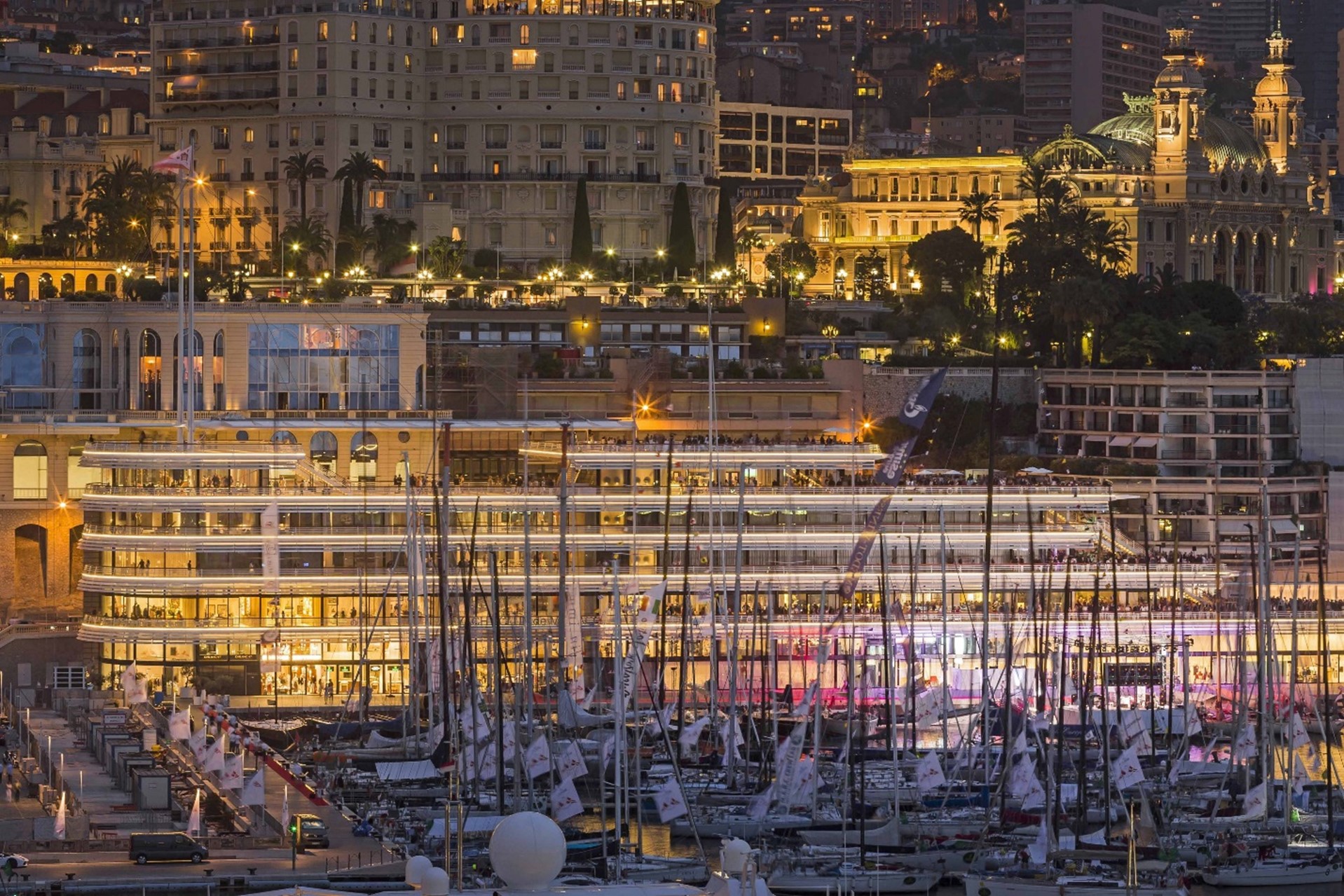
How It All Began
Looking at history from the point of view of a sailing enthusiast, it should be emphasized that the period between Napoleon's defeat at Waterloo and the middle of the 19th century deserves special attention. During this period, people, tired of long wars, were especially looking for rest.
After the hardships of the war years, yachting's popularity grew not only in the British Isles, which was understandable given the honestly and not so honestly earned status of "mistress of the seas". On the continent - in France, Holland and Scandinavia - many new enthusiasts appeared, seeking the fun and adventure of sailing. The profound socio-economic changes that took place in the world between 1815 and 1850 had serious consequences for amateur sailing.
The accelerated pace of industrialization, the exploration of new continents, the development of communications, technology, the abolition of slavery, the progress of education and science indicated that the world had entered the era of capitalism. It was obvious that sailing was not only for pleasure. At that time, it actively contributed to the progress of industry and trade, and became an essential feature of a developed economy and civilization. In England, which had grown rich after the Napoleonic Wars, the number of yachts increased from 50 to 500 in 1812-1850. And although sea sailing was still primarily the preserve of the elite, more and more people found the opportunity to take up yachting.
Of course, the club as an organized institution was not an invention of sailors. It can be assumed that clubs in England began to operate at least from the time of the Tudors.
During the time of Elizabeth, in the tavern "Under the Siren", on Friday Street, there was a club, the founder of which was the famous corsair and admiral Sir Walter Raleigh.

The first clubs were primarily a place for regular meetings of friends at a common table. Of course, the company was by no means limited to the destruction of tasty dishes and good wine. The commonality of views and interests was manifested in the discussion of various issues of a political, social, artistic, scientific or economic nature. Not only the scale of interests, but also the level and traditions of the clubs were very diverse.
James, Duke of York, participant of the Royal Regatta on the Thames, is said to have founded the oldest club. This was the Royal Navy Club founded in 1674 - it became the prototype of the officer's casino. The club was considered exemplary: starting from the 19th century, others began to imitate it.
Owners of yachts based in the same port (especially in winter, when sailing was not fun) met from time to time at a common table to refresh their memories of the past season, agree on plans for the coming summer, talk about their vessels, their merits and preparations for a new voyage. Of course, such meetings could not be considered organized sailing clubs. Nor were yacht flotillas clubs.
The Birth of Tradition
However, during the appearance of the yachting club organization, very characteristic general features emerged. Nothing in this movement was imposed from above, nothing was decided based only on theoretical premises or on other people's examples. Everything developed in an authentic way, flowed from the obvious needs and characters of people. Gradually, traditions and customs were born in the lives of sailing enthusiasts, which were then transferred to organized yacht clubs and supported to this day.
These were traditions of equality and brotherhood, friendship and loyalty; traditions of love for one's yacht and its crew, conscious discipline and devotion to the common cause; traditions of courtesy and honor, although not extending beyond the select group, within its boundaries they were nevertheless observed very strictly.
These traditions are understandable and close to yachtsmen today. They also became an incentive for mutual rivalry and, naturally, contributed to the development of organized sailing regattas (as the boat races were called). Almost until the middle of the 19th century, sailing yachts served primarily for travel and recreation, however, already in 1775, an organization of sailing enthusiasts arose in England, called the Cumberland Fleet, created specifically for the preparation and holding of regattas, that is, for purposes close to the modern concept of sailing.
But amateur sailing also developed far from London and the Thames. Favorable conditions for this existed on the south coast, near the English Channel. The Solent Bay and the Isle of Wight, where the town of Cowes with an ancient castle in the center is located, form the picturesque coast of Hampshire - in this area with a mild climate and long-standing maritime traditions, sailing yacht races were held starting in 1780. It was there in 1812 that fifteen yacht owners founded a squadron, which later transformed into the oldest English yacht club, Royal Yacht Squadron. And it happens to take our top spot among the 5 most prestigious yacht clubs in the world.
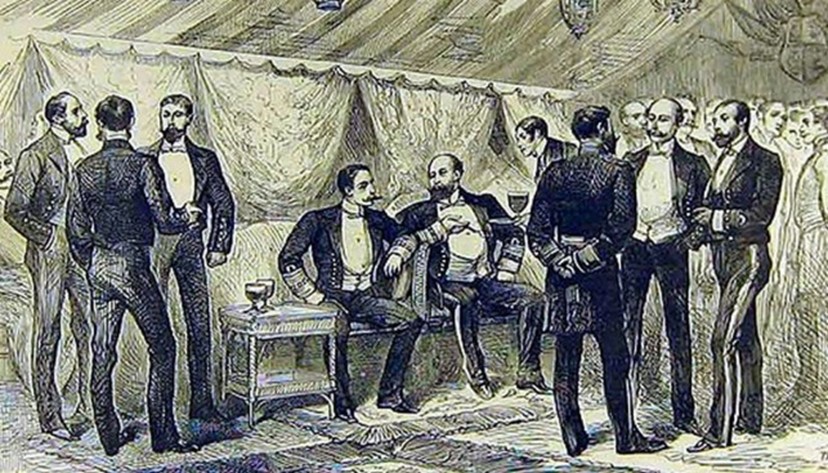
1. Royal Yacht Squadron: Under the Patronage of the Queen of Great Britain
What makes a yacht club prestigious is not so much the privileges for its members, but rather its centuries-old history, unique geography and famous personalities who are able to pay thousands of dollars in fees to ensure elite comfort for themselves and their loved ones.
History of Royal Yacht Squadron (RYS) begins at the beginning of the century before last. Two hundred years ago, in the Thatched tavern House in central London, 42 English gentlemen gathered to dine and talk about their common passion – sailing. The meeting was such a success that it was decided to hold similar gatherings twice a year, once in London, once in Cowes on the Isle of Wight, where many had country houses. Thus, was born one of the most famous yacht clubs on the planet – Royal Yacht Squadron.
At first, however, it was known under a much more modest name – simply the Yacht Club. It received the proud epithet "royal" in 1820 after the coronation of Prince Regent George IV, who had been solemnly accepted into the ranks of the club's members several years earlier. Since then, Royal Yacht Squadron and the royal family are inextricably linked: the head of the royal house is the patron of the club.
Queen Victoria had a huge influence on the development of this club. George V was no less sympathetic, as was Edward VII. Then Elizabeth II, whose husband was the first admiral of the club, took over the baton. The patronage of the royal family became a tradition.
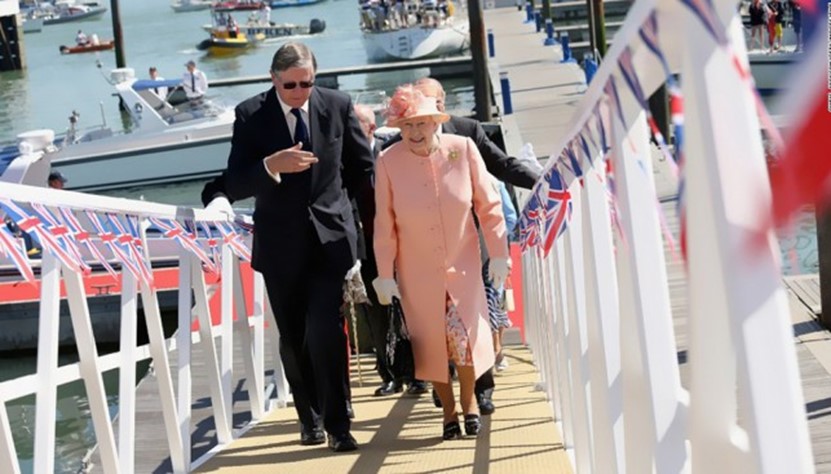
The development of sailing in Cowes attracted particular interest from the Royal Navy, and the yacht club made its vessels and facilities available to the British Navy on several occasions. One of the first honorary members of the club was Admiral Thomas Hardy, who took part in the famous Battle of Trafalgar, and in subsequent years the RYS accepted many other distinguished naval officers into its ranks. The close cooperation between the club and the Navy was symbolically secured in 1829, when the British Admiralty officially obliged all members of the club to wear the famous White Ensign of the English Navy. RYS is the only civil institution to have been granted this privilege.
White Ensign is fluttering above the RYS clubhouse too – the castle in Cowes, on the north shore of the Isle of Wight. The building was founded under Henry VIII in the first half of the 16th century, but today very little remains of the Tudor defensive tower: the castle has been rebuilt several times, gradually losing its impregnable appearance and acquiring the appearance of a real English country estate.
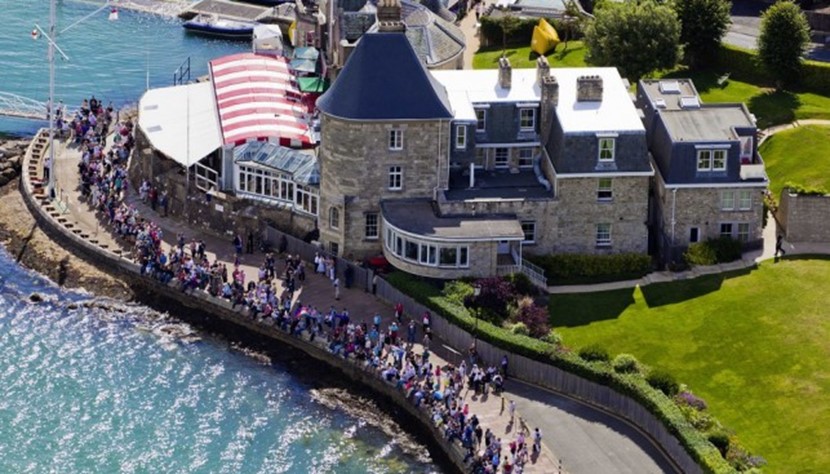
Royal Yacht Squadron is truly aristocratic: all kinds of innovations are treated with caution and skepticism here. This club was conceived as an establishment of the highest degree of elitism, accessible only to the chosen ones, those who appreciate true everchanging values.
The "castle" itself is famous for its luxurious interior and many historical artifacts worthy of display in any museum. However, you can admire the interior only if you adhere to a strict dress code: a suit and tie are mandatory, every self-respecting yachtsman must wear leather deck shoes, preferably worn - this is considered a distinctive feature of a real sea wolf. Here, within these walls, the tradition was born of wearing red trousers to club events along with a blue blazer, which are now called cove trousers.
The dining room is a favorite place for members and their families in this club. The room is decorated with real gold, a large mahogany folding dining table is located in the center of the room. On the walls hang portraits of members of the royal family who patronized the club.
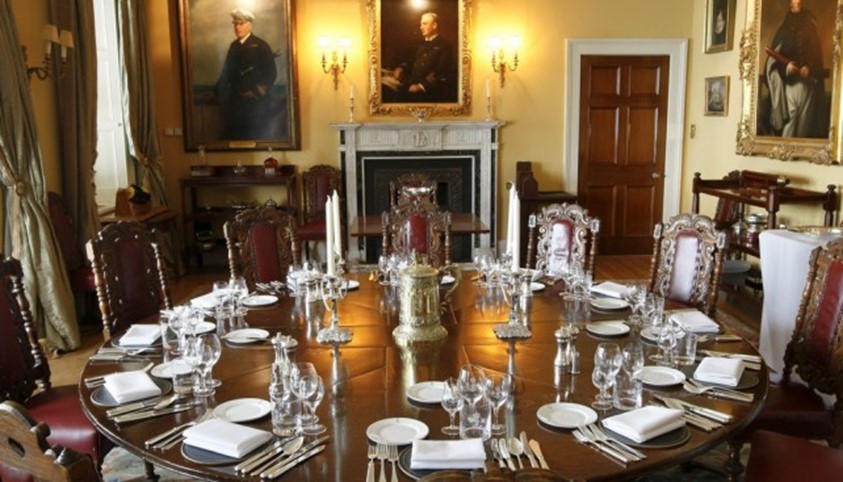
The large veranda is a great place to relax with a glass of your favorite drink. It is like a balcony with magnificent views of the Solent. There are conversation rooms furnished with sofas and armchairs, and private rooms for those who wish to spend a little longer in this luxurious place.
The racing committee has settled on the spacious veranda. The committee works only during the competitions. Nearby is the cannon that gives the start to the participants of the regatta, as well as models of famous vessels with plates on which the names of the owners and winners of the competitions are written. The steering wheel with gold coating from the schooner Victoria & Albert is also on display here.
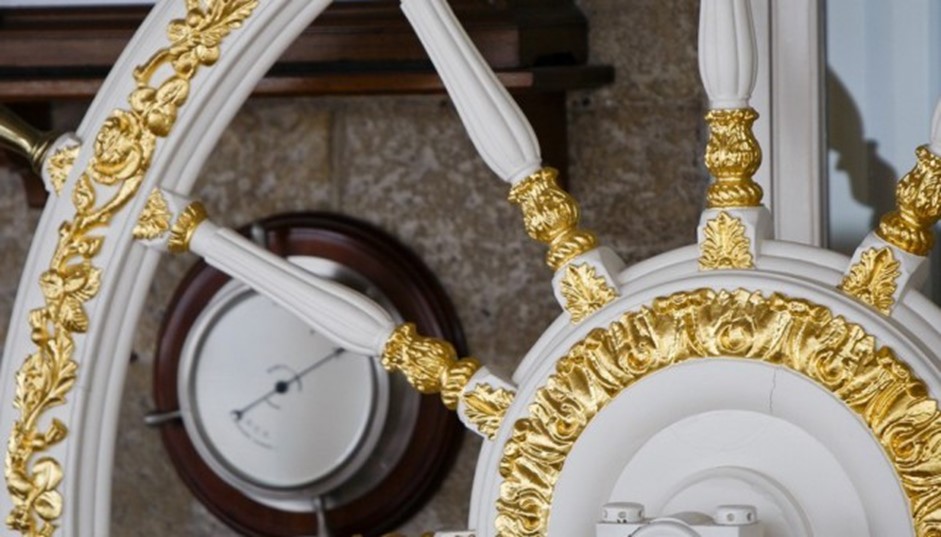
The former mast of the Bloodhound, now the club's flagpole, sits above the veranda. The club has a strict rule that outsiders are not allowed to touch the flagpole.
The basic requirement for potential membership was laid down at the very first meeting of the founding fathers in 1815: anyone wishing to join the yacht club had to own a yacht of at least 10 tons. Since then, additions have been made, so that today a person must be at least 21 years old, have an active interest in sailing, and only upon recommendation from at least three current RYS members. The number of members is constant and equals 535. The club also includes 20 honorary members, 70 members of the Royal Navy, 35 people who are members of the club due to their special status (by office), and 500 so-called associate members. The admission procedure usually takes two years.
Thus, in 1899, despite his friendship with the Prince of Wales, Sir Thomas Lipton, an English millionaire and tea king, one of the most generous patrons of yachting, who donated five yachts for the famous America's Cup races, did not pass the vote. True, Sir Thomas Lipton was eventually accepted as a member of the club, but this happened only 32 years later, a year before the death of the 70-year-old man.
Royal Yacht Squadron remains to this day a 'closed nobility' in the world of sailing.

The main programmatic activity of the future Royal Yacht Squadron, in which all members of the club took part, were joint sailing expeditions under the leadership of a commodore elected for the day. The first races in the Solent were held by members of the yacht club immediately after its foundation, but these were mainly personal rivalries between some particularly passionate yachtsmen.
In 1851, Royal Yacht Squadron has announced that the annual race around the Isle of Wight, in which the prize for victory is the Hundred Sovereign Cup, is open to yachts from other countries for the first time. Among those who have responded to the invitation was USA’s schooner named America, which crossed the Atlantic to take part in the World Exhibition in London.
The defeat of the English yachts in this "battle" is still, in the words of one of the RYS admirals, "an unhealing wound". After this victory, the Cup of One Hundred Sovereigns went overseas and in 1857 was presented by the creators of the schooner America to the New York Yacht Club.
2. New York Yacht Club: Face of America's Cup
So, the next top of our rating is the long-standing winner of America 's Cup. This is what the Hundred Sovereigns Cup, won by the schooner America in the race around the Isle of Wight, became known as.
New York Yacht Club was founded on July 30, 1844, aboard the yacht "Gimcrack", owned by John Stevens, a representative of an ancient family of shipbuilders. The yacht was anchored off the West Side that day, and nine owners of the most luxurious New York yachts were gathered on board. Stevens was elected the club's commodore, and soon his name was also associated with winning the Royal Yacht Squadron Cup - the now famous America's Cup.
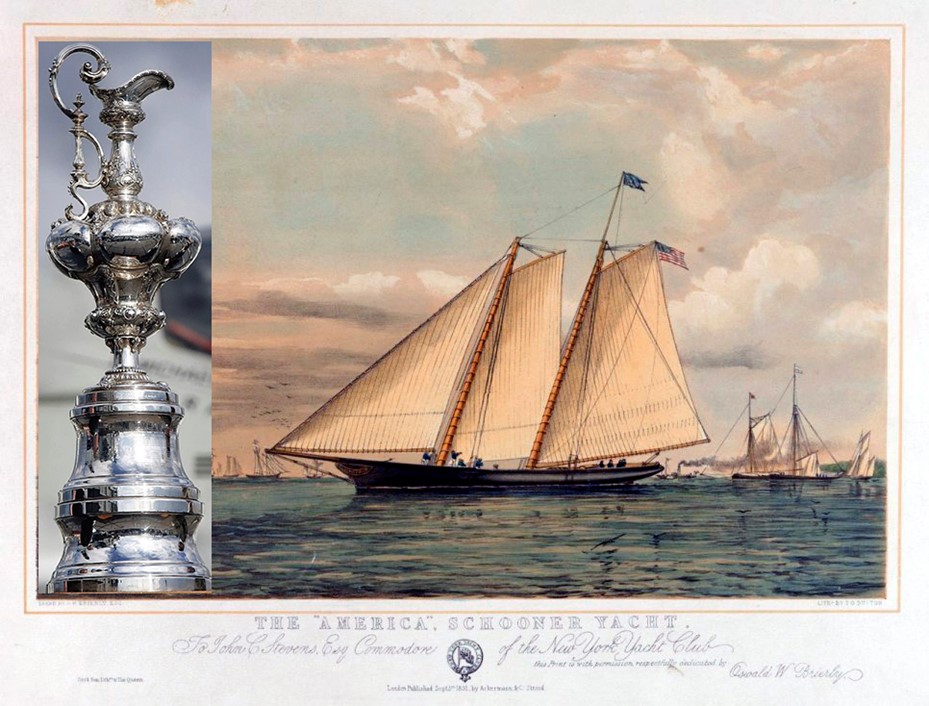
Since 1870, America's Cup has become a challenge prize and serves as a reward for winning the eponymous series of match races between the winner of the previous cycle and a challenger who is selected based on the results of the qualifying competitions. Yacht Squadron has tried many times to win back its home cup, but to no avail. In 2024, the Emirates Team New Zealand won the 37th America's Cup in sailing races - and the fact that Charles III is the monarch of New Zealand, since this country is part of the Commonwealth of Nations, cannot console RYS and the English.
However, as we can see, the long-standing symbol and winner of these competitions, New York Yacht Club, has also lost its leading position in our time. The fight for the America's Cup has not ceased to this day. The honour of winning the prize still attracts yachtsmen from all over the world, although only a few countries are able to participate in the fight for it - the expenses associated with these regattas are very high.
New York Yacht Club remains the first and most prestigious yacht club in the United States. In the minds of American society, it is a gathering of the most influential people in America. For more than a hundred years, the club has been located on West 44th, not far from Passenger Ship Terminal. The massive baroque building with galleon-shaped windows was donated to the club by Pierpont Morgan, the most famous and richest American citizen and one of the club's first commodores, in the late 19th century. Once, Texas oil magnate Henry Pierce asked Morgan how much it costs to maintain a yacht. The answer was rude but fair: "Forget it. Anyone who asks such a question has no right to own a yacht."
Morgan came up with the idea of locating the club in the center of New York on the Hudson. He also made a sketch of the building. According to the architectural idea, all the details of the building – both external and internal – should convey the atmosphere of a large sailing ship. For example, the windows are the same as those on the stern of a Spanish galleon and the dining room is made in the style of a barquentine hold.
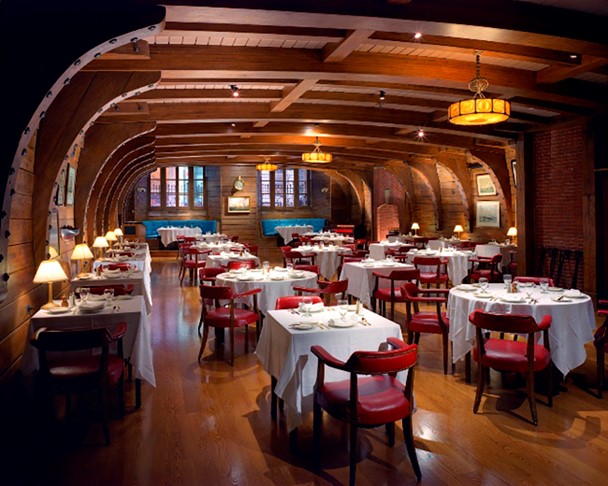
The club's architecture was developed in collaboration with Whitney Warren, an ardent adherent of the Beaux-Arts style, a continuer of the tradition of the Italian Renaissance and French Baroque.
One of the most interesting rooms in the club is the trophy room. It is often used for business talks and negotiations. They say that negotiations are always successful when surrounded by the world's largest collection of yacht models. Most of the models are yachts of America's Cup winners. The club's charter has a special clause requiring each member to place a model of his yacht in the trophy room.
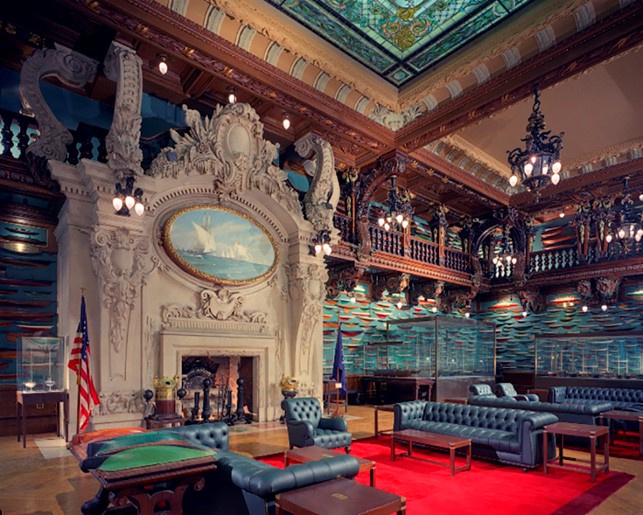
New York Yacht Club is a meeting place for the American establishment. For a hundred years, industrialists and financiers have met here every day in the dining room or in the bar of the trophy room and talked about yachts, about life, about business. After Bennett, who protested against the imposed rules and unequal conditions for participants in the America's Cup, left the post of vice-commander of the club, the yacht club began to be owned by the richest people of their time - the Vanderbilts and the Morgans, later the Astor family joined this club.
Ted Turner biographer Roger Vaughan wrote in the foreword to his book about the famous modern TV mogul and his involvement with the New York Yacht Club: "Who are the elite of American sailing? They are the same people who run the business and financial worlds. They manage yachts and large corporations with the same virtuosity."
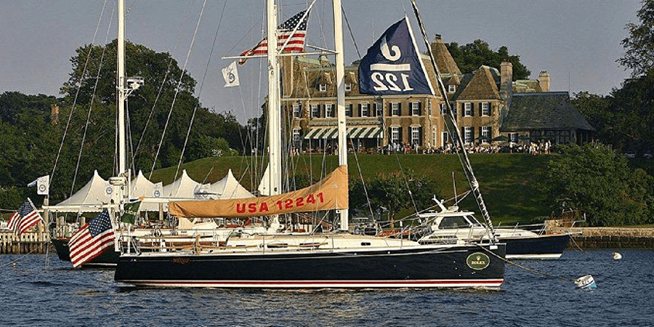
New York Yacht Club set the yachting fashion all over the world for a long time. Traditionally, its members were the richest people in the country, and almost every one of them wanted to have not only the most beautiful, but also the fastest yacht. Talented yacht designers, among whom was Nathanael Greene Herreshoff himself, worked tirelessly, receiving the order after order. Even before the start, a real competition between customers' ambitions and the thickness of their wallets began.
Many yacht models are still alive and cause genuine delight among amateurs and professionals. After the monotype model New York 70 (NY70) was rejected due to the huge sail area (with a displacement of 52 tons - 645 sq. m), the members of the club decided to make the New York monotype much cheaper, reducing its dimensions. This time the yacht's length at the waterline was to be 30 feet. A new project was ordered from Herreshoff.
The NYYC members had the following requirements: "A good seaworthy vessel, free from any unusual features, about 30 feet of waterline, with short overhangs, moderate breadth and draft, a deckhouse, a simple rig and a sail area of about 1,000 square feet."
Soon a project for a wooden yacht with a solid oak frame appeared. Its sides were covered with pine wood, the deck, which was decorated with a mahogany wheelhouse, the false keel was cast from lead.
The yacht had a gaff sloop rig. A characteristic feature was the glazing of the wheelhouse: a whole chain of rectangular portholes ran along its side walls.
The series of 18 boats was built with impressive speed. The first yacht, "Alera", was launched 35 days after its keel was laid and was launched on January 3, 1905, with each subsequent yacht launched at intervals of a week. The price of one yacht was $4,200.
The NY30 project turned out to be very successful. This "New Yorker" was immediately loved by yachtsmen for its excellent sailing and seaworthiness. The yacht was good both on short distances and on long stages of coastal races. The NY30 class became one of the most beloved and competitive in the USA. The best helmsmen of the country sailed these boats, a victory in the 30s at the beginning of the 20th century was a significant event in a sports career. NY30 became the first successful attempt of the New York Yacht Club to create its own monotype.
In 1906, a new attempt was made to create a class of large one-types. This was urgently required by the status of members of the New York Yacht Club. The class was named NY57.
But this project did not arouse much interest: wooden yachts of such length were not only very expensive, but also required constant – and considerable – financial investments. Only three yachts were built according to the NY57 project between 1906 and 1908.
The next step of the New York yachtsmen was the appearance of the NY50. On May 25, 1913, seven beautiful and absolutely identical yachts set out for a triangular course, set up near Long Island. This was the best attempt to organize a representative fleet of large monotypes. In just one year, 9 yachts were built according to the NY50 project.
The New York Yacht Club's last attempt to make a "large" monotype was the construction of the gaff sloop NY40. The first yacht of this design was launched in 1916. Interestingly, unlike other "New Yorkers", NY40s were built over a period of 10 years, until 1926 (a total of 14 yachts). Perhaps their popularity was due to the fact that Herreshoff (and this was again his design) immediately conceived them as cruising and racing yachts.
Several yachts of the NY30, NY40 and NY50 classes have survived to this day. They regularly participate in classic yacht regattas, short trips and cruise trips. Some of them have been restored with all the details characteristic of the time of their creation.

3. Yacht Club de Monaco: International Spirit in an Ultra-Modern Building
A multi-deck ship floats above the harbor of the Principality of Monaco, a super-modern yacht club building. A luxurious setting for the mostly motor yachts with very small number of sailing yachts that moor here. Why bother – this place is not for sports, but for glamour.
However, almost a quarter of the world's top 100 largest motor yachts fly the Yacht pennant at the masthead. Club de Monaco is a natural consequence of the economic policy of the House of Grimaldi, rules here for seven centuries.

For the experienced sailor Prince Rainier, the creation of a yacht club was not just a formality, in which he was fully supported by Princess Grace (née Kelly), who herself was not averse to sitting at the tiller of her personal sailboat.
By the way, sailing here began a long time ago – back when light Monegasque feluccas levied a two percent tax on all merchant ships passing the waters of the principality. As we can see, preferential taxation has ancient traditions.
Regattas began to be held in Monaco in 1862, and the first club was founded in 1888 by local racers under the name Societedes Regattes. It still exists today (called Société Nautique de Monaco since 1955) and today remains under the wing of Yacht Club de Monaco (YCM) – literally: under its roof and in a separate room.
Luxurious glamour softens the rigidity of the club's centuries-old maritime traditions, just as Hollywood superstars dilute the exorbitant level of high titles at YCM receptions and events. Underneath the frivolous glitter are rather strict rules and restrictions for current and potential YCM members.
But originally Yacht Club de Monaco had only a small club house on the western side of a well-closed bay (Port Hercule), which was not at all suitable for numerous receptions - perhaps only for coffee and cognac in a small circle.
The son of this famous couple, Prince Albert II, a great lover of water sports and president of YCM since 1984, understood the need to build a worthy clubhouse, corresponding to the status of the "main world marina for superyachts". And since June 20, 2014, the club has found its new home - a building 200 meters long, the height of which from the water level to the top of the flag mast is 30 meters, and the usable area is 9,000 sq m. The famous architect Norman Foster, who developed the project, received a special reward in addition to his fee: he was accepted as a member of the YCM.

On the opening day of the new navigation building Yacht Club de Monaco already united about 1,200 members from 60 countries. These are, by the way, very symbolic figures that echo the 60 years of the yacht club’s existence – YCM was founded by the Grimaldi princes in 1953. On the day of the establishment of Yacht Club de Monaco by Prince Rainier there were only 23 members of the club.
The new glass and steel building resembles a huge liner that has been moored at the edge of the eastern end of the bay, next to the famous casino district.
The opposite side provides the view for Formula 1 races at the Monaco Grand Prix. Let us also recall that every year in September the principality hosts guests of Monaco Yacht Show, the largest maritime exhibition in Europe, which attracts many water sports enthusiasts and professionals.
Norman Foster designed the building as a “city within a city,” so the six floors (“decks”) contain a multitude of places for relaxation, work, and shopping, for which we don’t have enough space in this article to list and describe.
At the main entrance, arriving club members are met by liveried attendants (it is a principality after all!), who park their cars in an underground garage with 146 parking spaces.
The balcony on the sunny side of the building offers a wonderful view of the harbour with its seven hundred berths, overlooked by the princely palace.
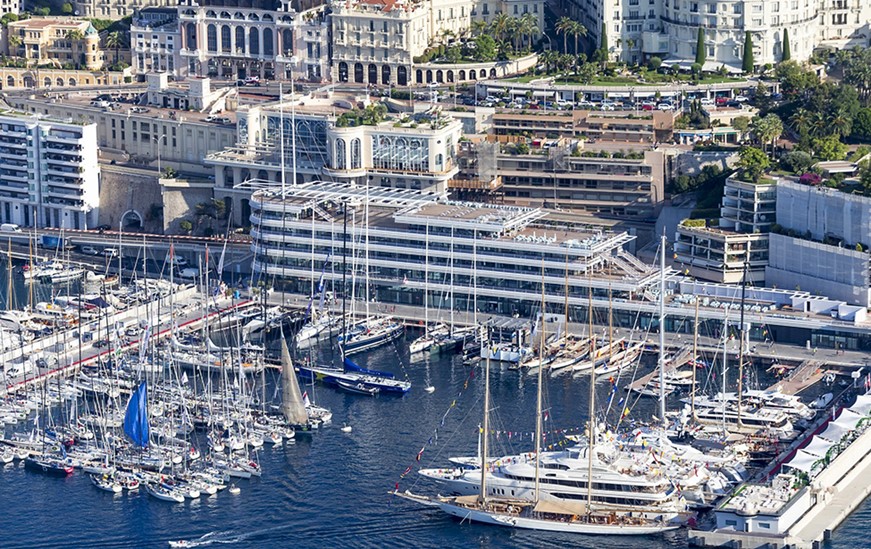
Despite the relatively democratic atmosphere and opportunities for guests, the traditions of European yacht clubs for their members are strictly observed here.
For example, the heart of the clubhouse – the library – is open only to active members of the club. It features a collection of maritime artifacts, a variety of ship models, historical photographs, graphics and watercolors, while books and a pool table provide a truly club atmosphere.
However, all guests have access to a sports bar (with a balcony, disco music and a large TV on the wall), a restaurant (ties and jackets in the YCM style, exquisite cuisine, a charming waiter), a swimming pool with adjustable depth and a beach bar, and sometimes a ballroom for 400 people.
It is clear that not everyone has access to the fourth deck (mezzanine), where the office of the club's general secretary and the work premises of its president, Albert II, are located. Twice a year, he holds a reception for new members of the club and personally welcomes each of them. The conditions for joining for a certain category are not too strict: just recommendations from two active members of the club. But the permanent members of YCM are against exceeding their number of one and a half thousand people: they believe that this will harm the elitism.
Today, the club has 1,500 members from 66 countries, and only a few of them live in Monaco, so the fifth deck, in addition to a place for open-air parties, houses apartments for members and guests of the club.
As we have already noted, the veneer of glamour cannot hide the business qualities of the owners and members of Yacht Club de Monaco, as well as their commitment to the sea. The yacht club holds regattas of schwertboots and keelboats (including vintage) in the winter. The club also has its own sailing school. In September 2014, Cluster Yachting Monaco was created in the principality, which finally cemented its reputation as the capital of the superyacht industry, and above all, motor yachts.
So today Yacht Club de Monaco is not just a symbol of sound economic policy, but to a large extent a successful state enterprise that helps the small principality maintain its independence.
4. Royal Bermuda Yacht Club: Homeland Newport Bermuda Race in Picturesque Locations
Beyond British Shores Royal Bermuda Yacht Club (RBYC) is the third oldest "royal" club, which has managed to establish itself as one of the leading yacht clubs in the world. Since its foundation in 1844, more than 60 commodores have changed here - the names of many of them have become legendary and are on the pages of the history of Bermuda and Great Britain.
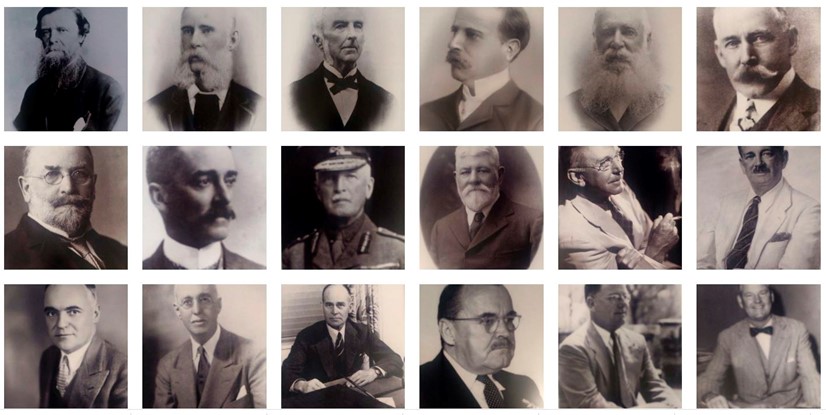
Founded under a calabash tree by British officers and Bermudian sailing enthusiasts, the club has been entitled to the adjective Royal since 1846 , made possible by the patronage of Prince Albert.
In May 2024, Commodore Rebecca Roberts announced that King Charles III had accepted the patronage of the Royal Bermuda Yacht Club, becoming the sixth Royal Patron since RBYC was founded. “The support and patronage of the reigning monarch reflects the commitment and dedication of our members to sailing,” said Rebecca Roberts.

Most of the 30 English gentlemen who founded the RBYC belonged to the 20th Regiment, then stationed in Bermuda. The Royal Bermuda Yacht Club has about 850 permanent and temporary members.
RBYC is a private organisation that offers special programmes to existing members, as well as to families and guests of members. These include sailing races, yachting and motorboat cruises. For those who want to learn the ropes of yachting, there is an active RYA training centre and an RBYC sailing academy.
All categories of guests can also participate in social events, visit first-class restaurants and banquet halls of Royal Bermuda Yacht Club.

It must be acknowledged that it was the RBYC and Bermuda that gave the world of sailing many ideas and concepts. From this tiny point on the world map a wealth of practical knowledge of the sea was spread, and significant contributions were made to modern hull designs, including both large vessels and dinghies.
But the event that is known to all sailors in the world and which attracts the best racing teams here is the Newport Bermuda Race. Every two years, sailing crews compete in a thrilling open-ocean race between the waters of the United States and Bermuda. It's the race of legends - a classic that turned the sea into a playground and made ocean racing a sport.
Slightly less popular than the Newport Bermuda Race are Bermuda Gold Cup, 505 Worlds, RC 44 and other regattas.
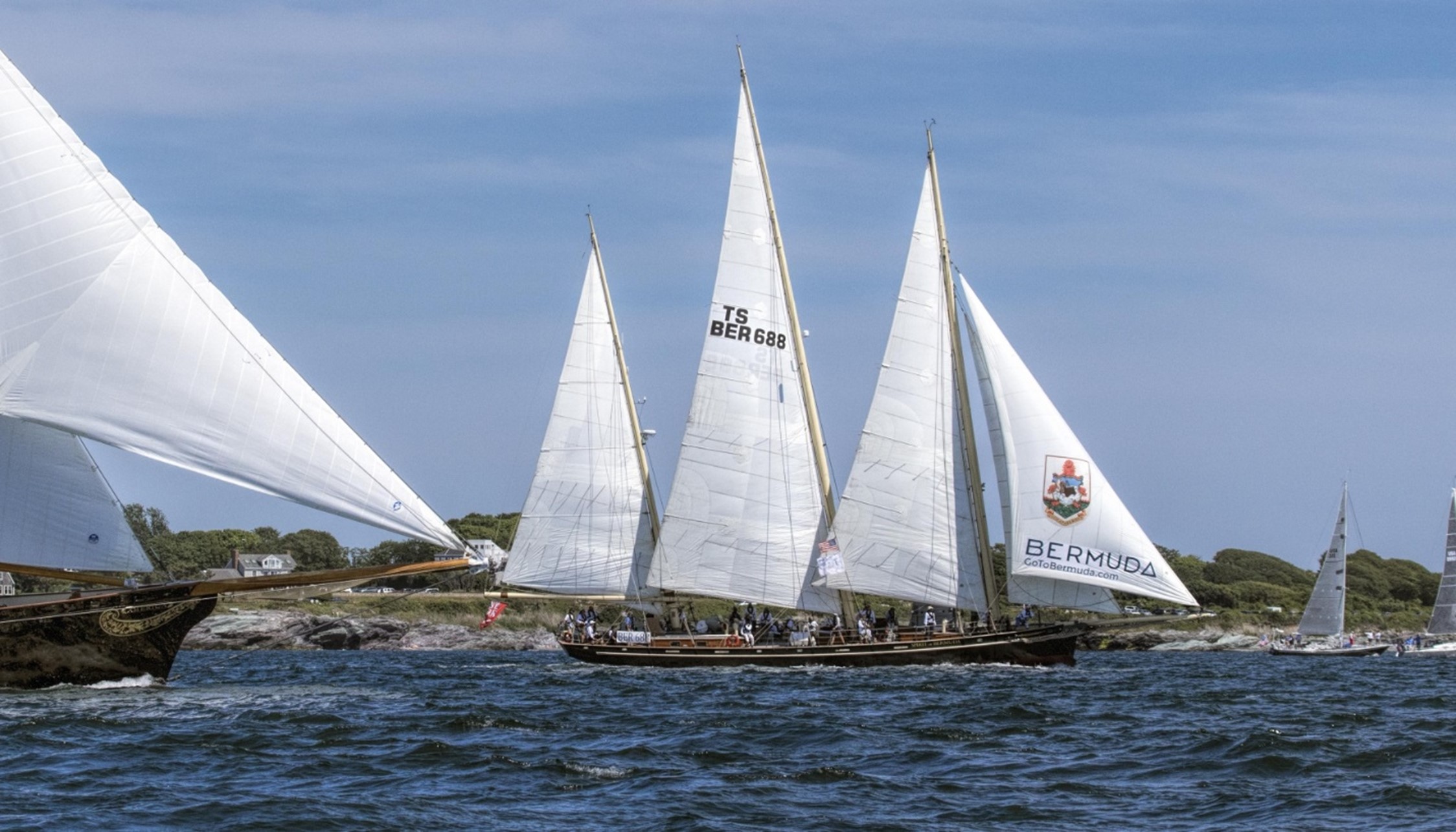
5. St. Tropez Yacht Club: Star Pilgrimage on the Côte d'Azur
Let's reveal a secret: in fact, a yacht club with exactly this name does not exist. Of course, there is more than one elite yacht club on the Cote d'Azur, each with original names. But St. Tropez Yacht Club is the unofficial name of the yachting community that gathers in the port of the fashionable resort of Saint-Tropez for various fashionable occasions - from the presentation of the Chanel cruise collection to the famous annual regatta Les Voiles de Saint-Tropez.
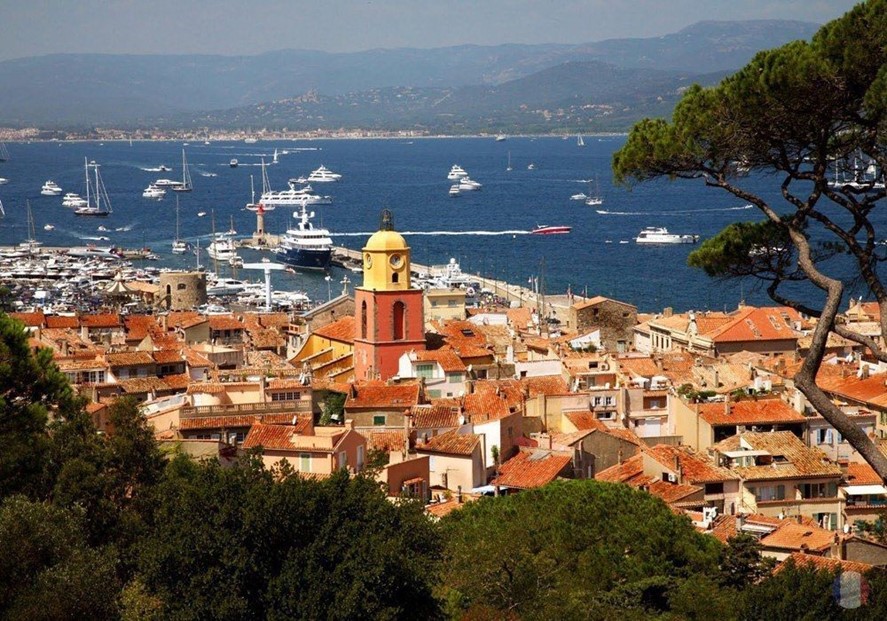
During the days of its holding, luxurious yachts of world celebrities moor at the chic boutiques and restaurants. It is generally accepted that the Sails of Saint-Tropez is the most luxurious regatta, full of various evening events. It is one of the most significant events in the world of yachting and certainly the most beautiful of the Mediterranean regattas. It features both ultra-modern yachts and rare wooden yachts.
Yachtsmen from all over the world gather in the beautiful bay of Saint-Tropez to find out who is the best. Yachtsmen of different skill levels, including beginners, take part in the regatta. The sporting excitement at sea, perfectly coexists with a rich entertainment program on the shore. And how could it be otherwise when it comes to the world-famous luxury resort of Saint-Tropez.
The founder of the regatta is the director of Club 55 Patrice de Colmont. The History of the Sails of Saint-Tropez began 30 years ago, in the distant autumn of 1981, with an impromptu race between two small yachts. Having sketched out the regatta route on a car map, the two participants raced to the finish line, which was located right opposite the aforementioned beach club, where they were drawn not only by the excitement of sport, but also by a wonderful lunch. After the race, when both teams were celebrating and having fun in the club restaurant, they were joined by a reporter from a local magazine, who wrote an article about the regatta in Saint-Tropez, advertising Club 55 at the same time. From that moment on, the history of the Les Voiles de Saint-Tropez began, which has retained its unique spirit of adventure and informality to this day. Only the number of participants has grown by several orders of magnitude, and the types of yachts have become much more diverse.

In this publication we tried to convey the idea that for some yachtsmen the clubs are a place of entertainment and relaxation, for others - an opportunity to apply physical effort for new sporting achievements. Some also use them as platform for presenting innovations in shipbuilding, testing the unique characteristics of a new vessel. Almost all clubs that have centuries-old or simply long-standing traditions are engaged in the promotion of yachting, training young people, attracting them to various types of water sports, the main one of which is sea races on different types of vessels and regattas.
At the same time, modern yacht clubs are not just a gathering place for sailing enthusiasts. In many cases, they are closed communities that business elite, politicians, and celebrities seek to join – that is, they are the sphere of elite networking. The fundamental features of this unique world are a solid historical heritage, strict selection upon entry, high entry annual fees. The level of yacht clubs and their current members allows them to hold prestigious regattas and other events that have a significant positive impact on shipbuilding and shipping in general. Thanks for reading!








